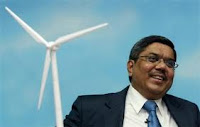How Large Companies Can Find Abundance in Scarcity
To compete with the dawning age of Scarcity corporate leaders will have to make some necessary changes in the way they think, the way their management thinks and the way their systems work. Some of the necessary steps that the leaders can take could be as mentioned.
Tie Senior Management’s Compensation to Frugal Performance
The senior management’s compensation should be linked to how frugal they can think. Florida Ice & Farm Co., a large food and beverage producer and distributor in Costa Rica developed and set the Balanced Scorecard to track how the company was reducing its consumption of natural resources.
R&D Should be Challenged to Do More with Less
To keep the huge R&D funding in control and to make sure that the engineers are not over doing it, it is best to budget the R&D and asking it do more with less. After visiting Russia, French carmaker Renault’s CEO Louis Schweitzer challenged his R&D team to make a car which costs less than Euro 6000 as that was the economic car range in Russia. The result was Logan, a car that was modern, reliable and affordable because it costs only Euro 5000. Even in India, Ratan Tata challenged himself to manufacture a car that was priced 1lakh. This resulted in the Tata Nano, world cheapest car ever.
Marketing Executives Should Create Separate Brands for Their Affordable Offerings
To avoid brand dilution, large companies need to create distinct brands for distinct segments. Considering that they may have a brand created for higher segments, they should create a distinctive brand for the lower segments. For instance, Hindustan Unilever Limited (HUL) has introduced 3 different washing powers in the market. Surf, Rin and Wheel are all brands owned by HUL and they all cater to different market segments.
Create Incentive Systems for Salespeople to Sell Affordable Products
Large companies must recognize that Jugaad innovation is not just about designing affordable products. It is also about selling the products in the market. This will not happen until the sales force has incentives to sell only the big ticket products. For example, Godrej is setting up a separate business unit to sell its new ‘Chotu’ line of low cost products which are targeted to the rural markets. ChotuKool and ChotuWash a refrigerator and washing machine are low cost.
Design Affordable Solutions from the Ground Up
R&D teams should move away from pursuing over-engineered perfect products and focus instead on developing good enough solutions. By good enough it is not meant a striped down version of an existing product, but a completely new product that is built from scratch.
Engage Eco-Aware Consumers in the Sustainability Dialogues
A lot do consumers have shown great interest in the companies who are socially responsible. Being environmentally responsible is on the top of the list. Companies can use the power of social media to showcase these consumers and inform the masses about the environment friendly initiatives of the company. This will build the credibility of the company and develop brand loyalty.
Partner Extensively
In the age of frugality, one man’s tool can be other man’s weapon. It is getting more and more necessary to partner and partner extensively with the right counterparts. Once a P&G CEO, AG Lafley noted ‘for every P&G researcher there are 200 scientists or engineers elsewhere in the world who could be just as good, a total of 15 lakh people whose talents we could use.’ Over the years P&G has moved from being an R&D company to being a Connect & Develop (C&D) company, one that sources as much as 50% of its new ideas from outside sources.
These are some of the most common strategies adopted by large companies. A company can adopt one of many strategies as per the requirement.



Comments
Post a Comment